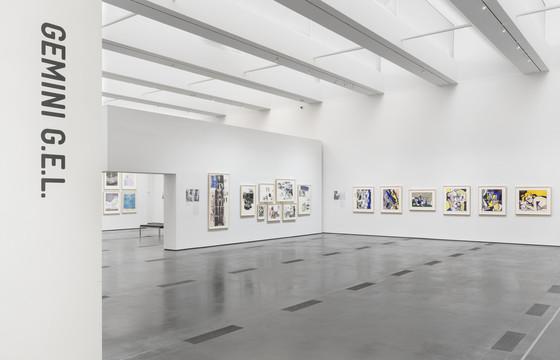Two exhibitions currently on view at LACMA cast light on the vital, yet often overlooked contributions of master printers in the creation of prints. Picasso and his Printers considers the critical support that master printers provided in the artist’s ambitious exploration of printmaking and illuminates their role in helping him achieve a compelling vision through the expansion of the medium’s potential. Likewise, skilled and resourceful printers at Gemini, from the workshop’s earliest days, embraced unbounded technical experimentation in their efforts to help artists realize their ideas. The Serial Impulse at Gemini G.E.L. explores how artists have engaged a variety of approaches to serial production, resulting in some of the workshop’s most significant publications. Works in both exhibitions exemplify how an artist’s creative drive matched by a printer’s experimental spirit can press the boundaries of traditional printmaking.
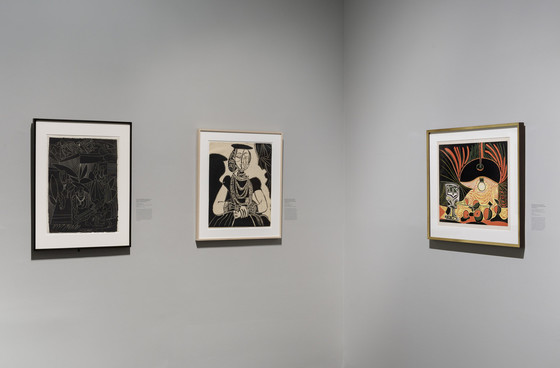
Over the past year while preparing The Serial Impulse at Gemini G.E.L., co-curated with Leslie Jones, I had the great privilege of observing master printers at work at Gemini, the renowned artist’s workshop and publisher of limited edition prints based here in Los Angeles. One July afternoon in the lithography shop, I watched as master printers Rachel Reid and Jennifer Turner printed Tacita Dean’s LA Exuberance 1. Not a word was exchanged as the duo performed an impeccably timed choreography of inking, sponging, and printing. Even the 40-pound inking roller, specially fabricated for this project, was handled seemingly without effort through a sequence of efficient and well-rehearsed movements. I was enthralled as Reid peeled back the sheet and lifted it off the press bed to reveal diaphanous clouds extending across a beautiful variegated blue sky. The print was set aside to dry, and the entire process began anew. It is important to note that the final printing represents but one stage in an iterative and often lengthy process of producing an edition. LA Exuberance, a series of 15 lithographs (soon to be on view at LACMA in the exhibition L.A. Exuberance: New Gifts by Artists), is the product of a nearly two-year collaboration between the artist and Gemini printers defined by much trial and error and, in Dean’s own words, “controlled serendipity.”
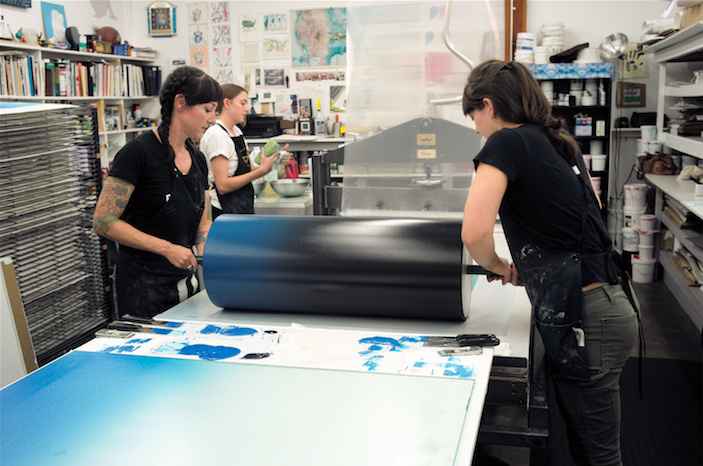
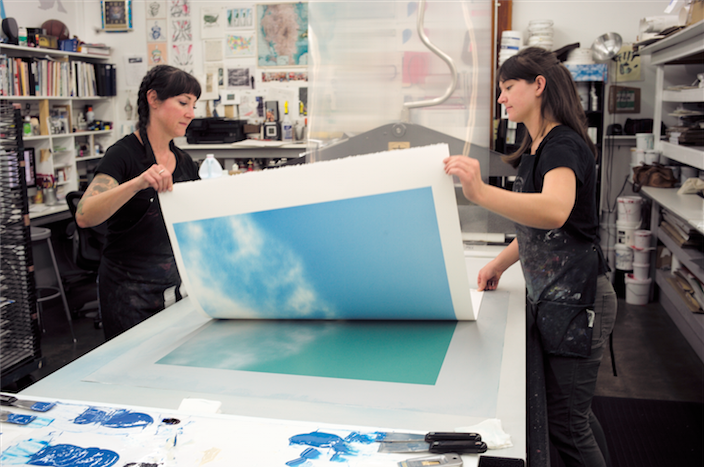
The job of the master printer entails physically demanding work. It also requires a disciplined approach and rational mode of thinking—even when the most adventurous experimentation is involved. Crucially, the role of printers is not to offer aesthetic suggestions, nor is it to introduce their own creative preferences. Master printer Jim Reid, (father of Rachel Reid, mentioned above), who has worked at Gemini for 36 years, asserts that what determines a project “is not what the printer sees. It’s not the printer saying this is a good lithograph, or this is a good etching… It is the artist saying this is a good work of art.” As Gemini co-founder Sidney Felsen has remarked about the workshop: "We're a support system, not a co-creator. Each artist is the captain of the ship while he or she is here."
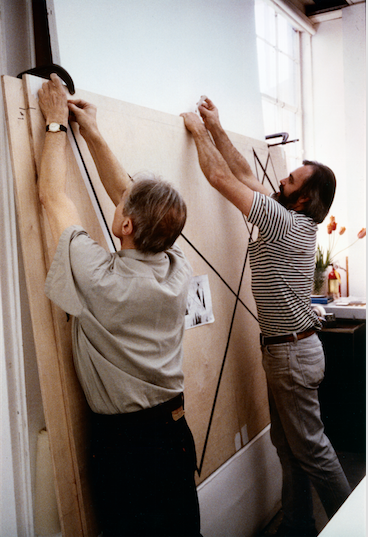
Nevertheless, printers have the capacity to be influential in their own way by broadening the artist’s creative reach through their own technical skill. Master printers enable artists to make full use of the possibilities of printmaking and to take advantage of the specific aesthetic qualities that can be achieved through different processes. Take master printer Roger Lacourière, an influential figure in Picasso’s evolution as a printmaker. While Picasso applied traditional lithography and intaglio techniques in the first three decades of his career, his prints demonstrate a bold new approach and heightened ambition from the mid-1930s when he began collaborating with Lacourière. Notably, under Lacourière’s tutelage, Picasso learned aquatint, a process in which areas of tone can be applied to a plate—in the case of the Blind Minotaur Guided in the Night by a Little Girl, creating a rich black ground from which highlights are scraped, reminiscent of mezzotint. The master printer nurtured Picasso’s command of more innovative methods of etching, and encouraged him to experiment to remarkable ends.
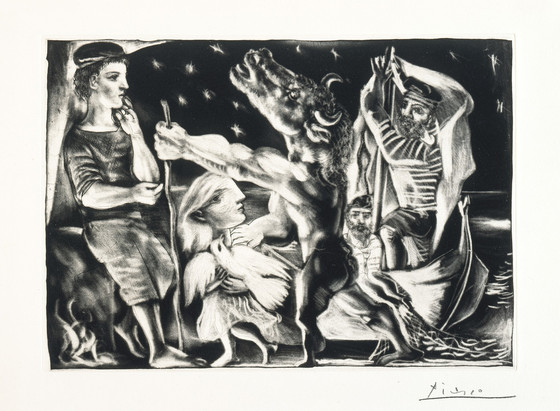
Jim Reid enthusiastically explains: “The whole essence of the job is problem solving.” Indeed, master printers must innovate solutions to the unique demands and aesthetic problems set before them by an artist. Such was the case for master printer Hidalgo Arnéra when Picasso came to him with a linoleum cut challenge. Picasso’s first major work in linocut, Portrait of a Lady after Cranach the Younger, was composed with five separately cut blocks, each inked in a different color. For the composition to succeed, the successively printed blocks needed to be perfectly aligned. Not wholly satisfied with the results, Picasso engaged Arnéra, and together, they engineered the “reduction method.” Picasso used the technique in his brilliant Still Life with Glass under the Lamp, where, rather than cut a separate linoleum block for each of the four colors, he progressively cut and printed the composition in nine stages from a single block.
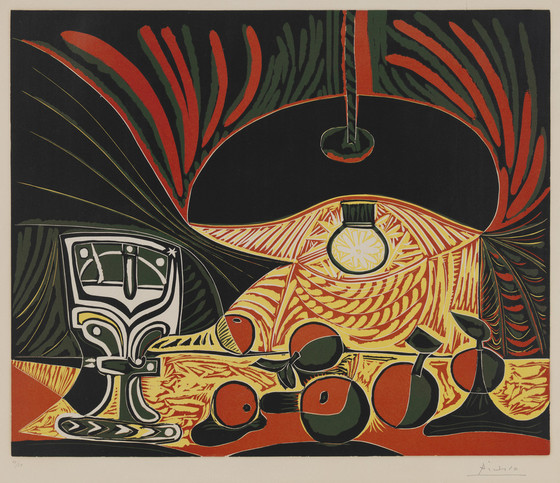
Over the years, Richard Serra’s projects at Gemini have become increasingly ambitious in scale and technical complexity. His ability to pursue these new avenues of investigation has been facilitated by Xavier Fumat, a master printer at Gemini since 1998 who has worked exclusively with the artist for around 13 years. For Transversals, a series of six works printed from seven etching plates measuring 90”x48”, Fumat conceived of the means to etch and print plates of unprecedented size. First, he devised a method to transfer Serra’s richly textured black drawings (made from rubbings of the asphalt in the Gemini parking lot) onto the large copper plates. To etch the plates, he constructed a tank that would contain 750 gallons of ferric chloride; improvised clamps that would hold the 180-pound plates; and rigged up a pulley system to lift the plates vertically in and out of this acid “bath.” Each plate was etched over six days with a team of printers working shifts to monitor the progress of the mordant’s action, which ultimately “corroded”, or etched away, close to 70 pounds from the copper plate’s surface. To print the plates, Fumat modified an existing large-scale lithography press to print intaglio and ordered special hand-made paper from Japan that could carry close to eight pounds of ink.
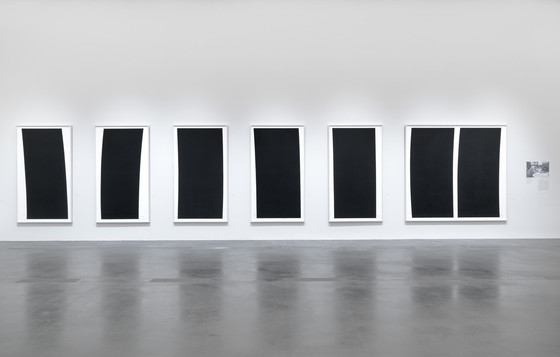
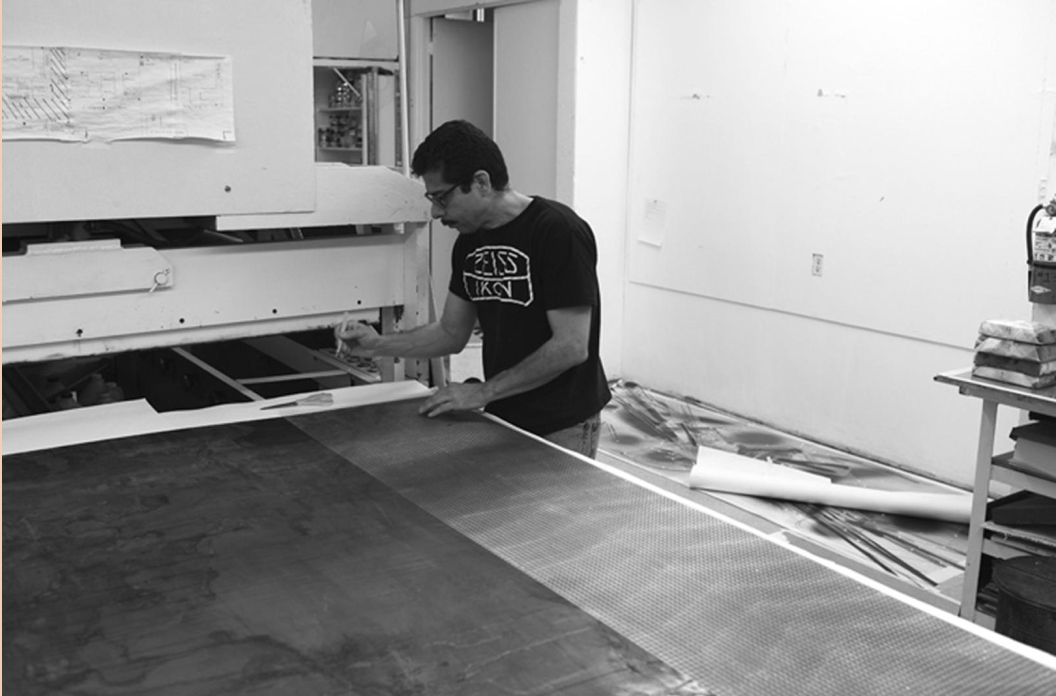
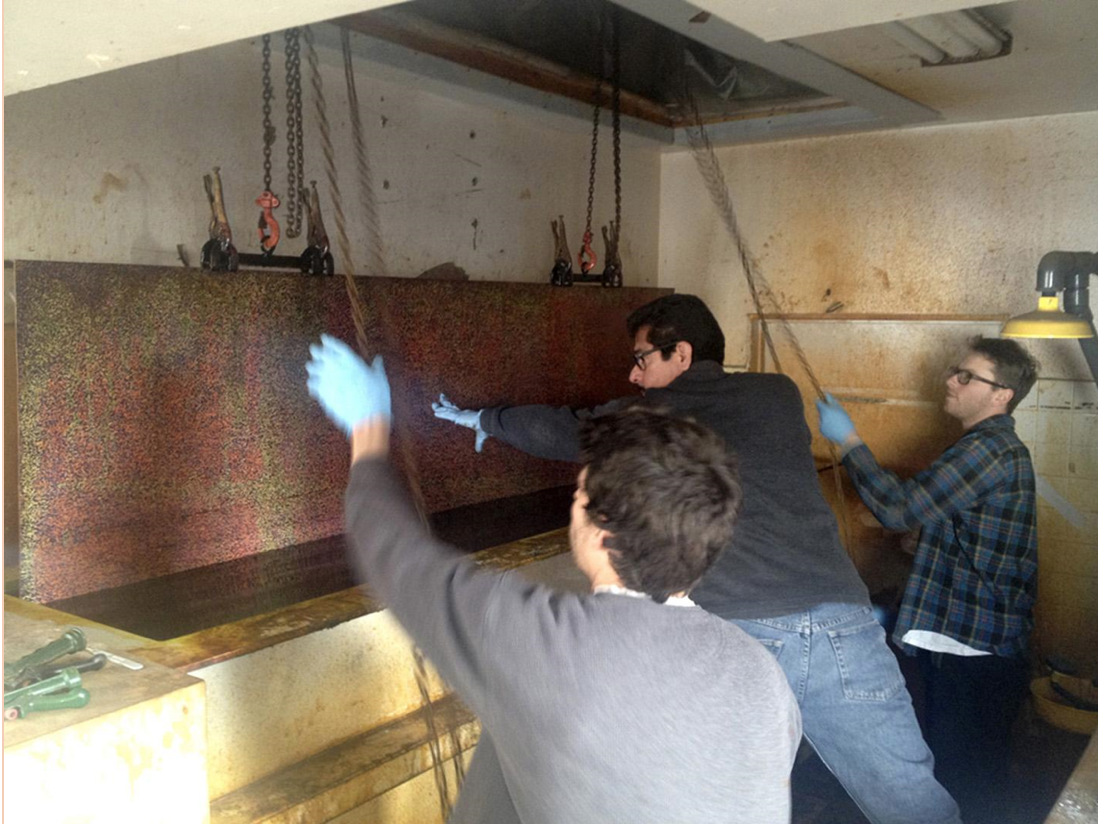
Fumat is inexhaustible in his commitment to pioneering techniques and imagining the equipment and materials necessary to support Serra’s visions. This profound dedication to the artist characterizes the work ethic of so many great master printers. To be close to Picasso, the Crommelynck brothers, Aldo and Piero, moved from Paris to establish a print shop in Mougins in the 1960s. Working at fever pitch, the Crommelyncks supplied Picasso with fresh plates daily and carried proofs back and forth between the artist’s home and their shop, often working through the night in order to keep up with the artist. In a period of approximately seven months, the 347 series (named after the number of plates in the suite) was executed.
As Case Hudson, now in his 10th year at Gemini, explains matter-of-factly: “You do whatever you can to get the project done.” For Susan Rothenberg’s mezzotint Puppet Series, this meant installing a press in the artist’s New Mexico studio to complete proofing the four plates in the series when her work in Los Angeles was interrupted. In a subsequent project, Hudson and his team of four printers worked for two and a half years with Julie Mehretu to proof and edition Myriads, Only by Dark, a multi-colored aquatint and spit bite on four panels, each measuring 81x45” and printed from a total of 57 copper plates.
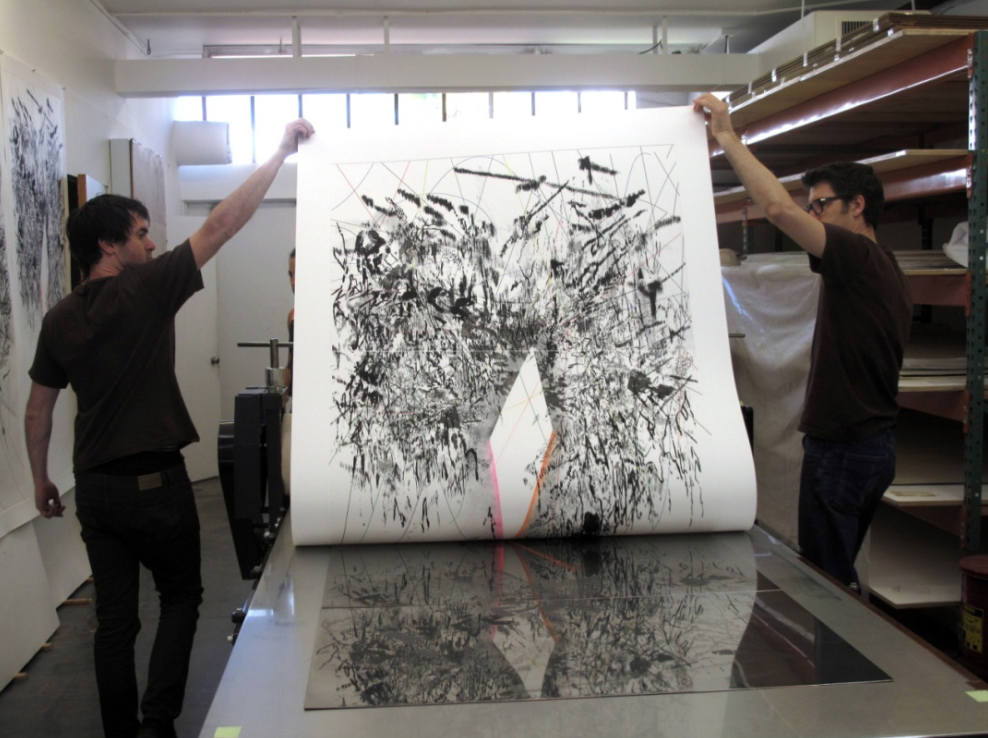
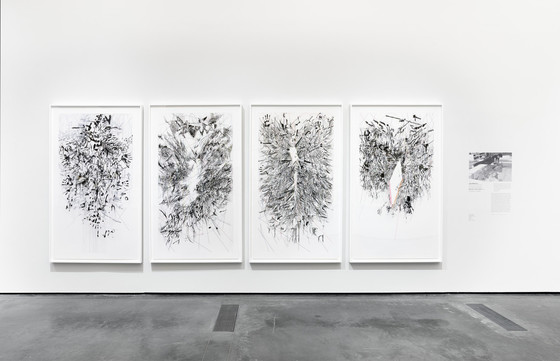
Partnerships between artists and printers entail a delicate balance to ensure the artistic integrity of the finished work. The relationship is one of communal effort that requires a great deal of trust. Indeed, Arnéra spoke of his collaboration with Picasso as “a confidence, between friends.” There is also much cooperation among the printers themselves. Jim Reid acknowledges the “real team approach” to editioning Roy Lichtenstein’s Expressionist Woodcuts, which was carried out by three teams of two people, all sharing lessons learned as they printed. On September 12, six Gemini master printers, past and present, joined Sidney Felsen and Leslie Jones in a discussion at LACMA about their work. There was an enjoyable sense of camaraderie on stage as each reminisced about the challenges and triumphs that have marked their careers. The panel was aptly titled “Unsung Heroes.”
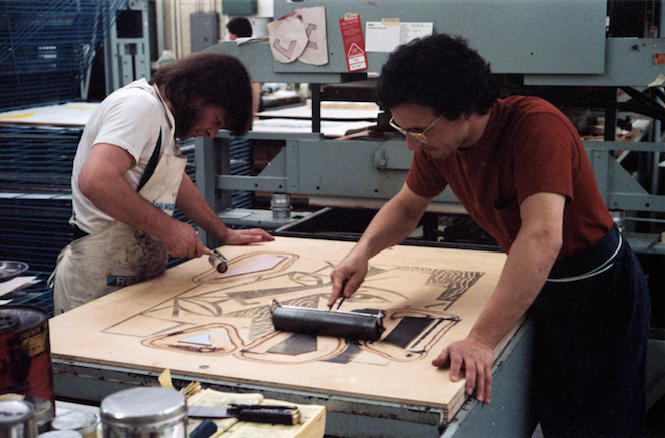
Given their critical contributions and notable role in the history of printmaking, it may seem surprising that master printers so often escape notice. In some respects, however, the very invisibility of the printer’s hands in the final work is one measure of his or her skill and success. Jim Webb (Gemini master printer from 1966 to 1977) recalls not only the challenge of matching perfectly Albers’s colors in White Line Squares, a series of 16 lithographs, but also that some colors were more difficult to print than others. Seeing the pristine surfaces of all 16 prints, one hardly imagines any such obstacles. Standing before these prints, what one admires is Albers’s color theory at work.
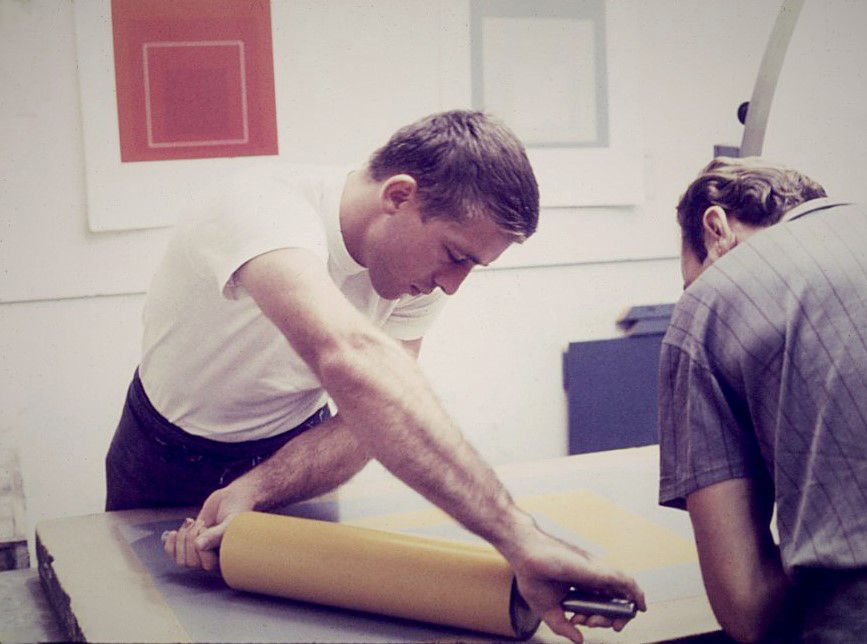
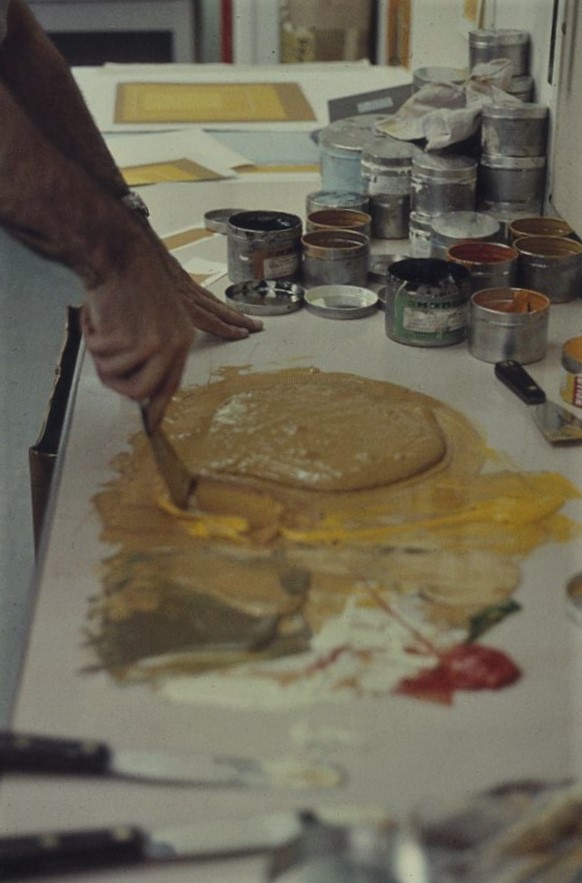
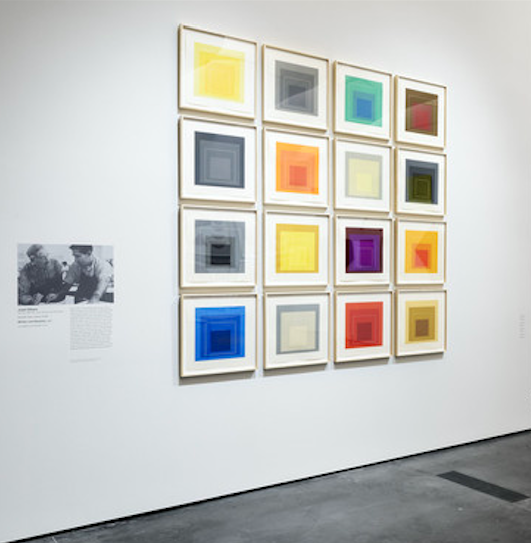
Picasso and His Printers, featuring 14 works by Picasso printed in the shops of six different master printers, is on view through November 27 in the modern art galleries. The Serial Impulse at Gemini G.E.L. is open to the public until January 2, 2017 in the Resnick Pavilion. The exhibition presents serial projects by 16 different artists, comprising 127 individual works, produced at Gemini with the support of the workshop’s master printers and fabricators over the past five decades.



